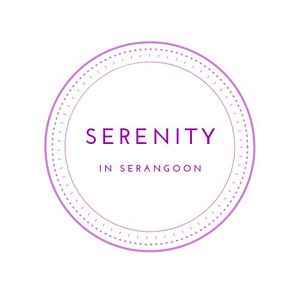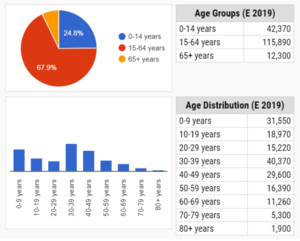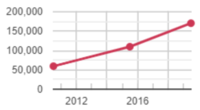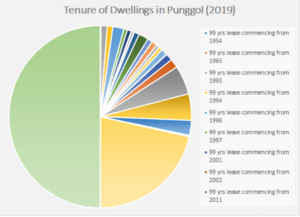Difference between revisions of "G2-Group06"
| Line 128: | Line 128: | ||
<tr> | <tr> | ||
<td>Masterplan 2018 Land Use</td> | <td>Masterplan 2018 Land Use</td> | ||
| − | <td> [https://data.gov.sg/dataset/mp08-land-use | Source] </td> | + | <td> [https://data.gov.sg/dataset/mp08-land-use|Source] </td> |
<td> - </td> | <td> - </td> | ||
</tr> | </tr> | ||
| Line 134: | Line 134: | ||
<tr> | <tr> | ||
<td>Master Plan 2008 Subzone Boundary (No Sea)</td> | <td>Master Plan 2008 Subzone Boundary (No Sea)</td> | ||
| − | <td> [https://data.gov.sg/dataset/master-plan-2008-subzone-boundary-no-sea | Source] </td> | + | <td> [https://data.gov.sg/dataset/master-plan-2008-subzone-boundary-no-sea|Source] </td> |
<td> Used to extract Punggol Planning Area and its Subzones inside </td> | <td> Used to extract Punggol Planning Area and its Subzones inside </td> | ||
</tr> | </tr> | ||
| Line 140: | Line 140: | ||
<tr> | <tr> | ||
<td>Master Plan 2014 Subzone Boundary (No Sea)</td> | <td>Master Plan 2014 Subzone Boundary (No Sea)</td> | ||
| − | <td> [https://data.gov.sg/dataset/master-plan-2014-subzone-boundary-no-sea| Source] </td> | + | <td> [https://data.gov.sg/dataset/master-plan-2014-subzone-boundary-no-sea|Source] </td> |
<td> - </td> | <td> - </td> | ||
</tr> | </tr> | ||
| Line 146: | Line 146: | ||
<tr> | <tr> | ||
<td>Population, Sex, Age Group for each subzone 2008 & 2014</td> | <td>Population, Sex, Age Group for each subzone 2008 & 2014</td> | ||
| − | <td> [https://data.gov.sg/dataset/master-plan-2014-subzone-boundary-no-sea| Singstats] </td> | + | <td> [https://data.gov.sg/dataset/master-plan-2014-subzone-boundary-no-sea|Singstats] </td> |
<td> Evaluate Draft Masterplan against population trends </td> | <td> Evaluate Draft Masterplan against population trends </td> | ||
</tr> | </tr> | ||
Revision as of 00:11, 21 October 2019
| Introduction |
What comes to your mind when you first heard the word ‘Punggol’? Most people would probably say that it's going to be a “hype” place to live in as the government is doing many redevelopments in the area just because it's pretty much located to malls and modern architecture objects. Some would even say that getting a BTO at Punggol would rather an investment for the future. Now, we might have observed pixelated motivation behind what makes a good place to live, not based on property value but one that fits the needs of residents. This project will resort to the revaluation of current developments in Punggol by emphasising to the future needs of the Punggol citizens. We will also take into account the current plan for Punggol under the Draft Masterplan 2019 to bring in insights and recommendations to better cater to the needs of Punggol residents. Our priority will be ensuring that in 5-10 years down the road, Punggol can be a place to live, work and play.
| Current Infrastructure(s) to 2019 | Planned Infrastructure(s) to 2025 |
|---|---|
| Smart Towns and Homes architects and engineers use smart planning tools and data analytics to analyse the wind flow, solar irradiance and shaded areas within a town, and determine how best new flats can be designed and sited to provide maximum thermal comfort and a more conducive living environment for residents |
Open Digital Platform centralise the data collection of single estate systems (facilities, building and estate management systems, district cooling system, pneumatic waste conveyance system, autonomous goods delivery systems, access and security systems, carparks system, traffic lights system, and autonomous vehicles) |
| Transportation Punggol LRT, MRT, Bus Interchange |
Centralised Logistics Hub A single stop where all goods can be dropped off and picked up, improving productivity and reducing traffic |
| Amenities Waterway@Punggol |
District Cooling System Centralises cooling needs, expect space and cost savings with a reduction in the district’s carbon footprint |
| Pneumatic Waste Collection A district-wide underground vacuum-pipe network, this would eliminate the need for waste collection trucks and eradicate the odour from refuse chutes. |
|
| Smart Energy Grid Enable consumers to adopt clean sources of energy for daily use (e.g. charging electric vehicles), facilitate greater energy efficiency and savings (e.g. through smart metering). |
| Project Objective |
- Plan for human beings, we will make resident-centered recommendations to meet the future needs of Punggol Residents.
- Re-examine the Masterplan set for 2019 by synchronising the Government’s vision for Punggol and resident’s needs.
- Perform observation and analysis in micro-level subzone level in Punggol planning area and subzones.
| Scope of Work |
scope of work Content
| Data Sources |
| Data | Source | Remarks |
|---|---|---|
| Masterplan 2018 Land Use | [1] | - |
| Master Plan 2008 Subzone Boundary (No Sea) | [2] | Used to extract Punggol Planning Area and its Subzones inside |
| Master Plan 2014 Subzone Boundary (No Sea) | [3] | - |
| Population, Sex, Age Group for each subzone 2008 & 2014 | [4] | Evaluate Draft Masterplan against population trends |
| Data preparation |
Data prep content.
Step 1
Content
| Academic References |
I. Study/Resource No 1
Analysis / methods references
II. “stpp: Plotting, Simulating and Analyzing Spatio-Temporal Point Patterns”
| Overview System Architecture Diagram |
Picture? Scripts? Codes? Software? Deployments?
| Project Prototype |
| Application Overview (Analysis Methods) |
| 1. Methods 1 |
Explanation 1
| 2. Method 2 |
Something
| 3. Method 3 |
Something
| Project Timeline |



